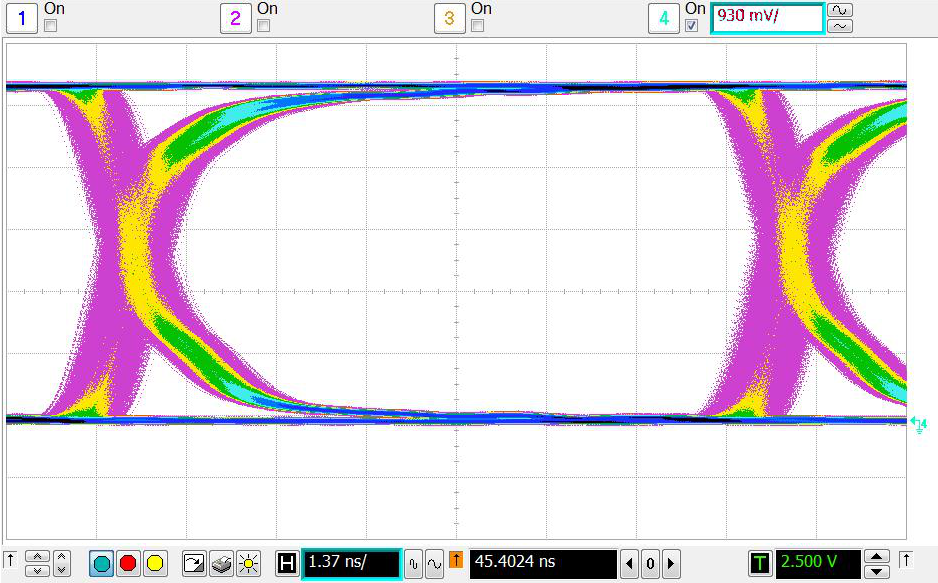SLLSEP0A July 2015 – March 2016 ISO7820
PRODUCTION DATA.
- 1 Features
- 2 Applications
- 3 Description
- 4 Revision History
- 5 Pin Configuration and Functions
-
6 Specifications
- 6.1 Absolute Maximum Ratings
- 6.2 ESD Ratings
- 6.3 Recommended Operating Conditions
- 6.4 Thermal Information
- 6.5 Power Dissipation Characteristics
- 6.6 Electrical Characteristics, 5 V
- 6.7 Electrical Characteristics, 3.3 V
- 6.8 Electrical Characteristics, 2.5 V
- 6.9 Switching Characteristics, 5 V
- 6.10 Switching Characteristics, 3.3 V
- 6.11 Switching Characteristics, 2.5 V
- 6.12 Typical Characteristics
- 7 Parameter Measurement Information
- 8 Detailed Description
- 9 Applications and Implementation
- 10Power Supply Recommendations
- 11Layout
- 12Device and Documentation Support
- 13Mechanical, Packaging, and Orderable Information
Package Options
Refer to the PDF data sheet for device specific package drawings
Mechanical Data (Package|Pins)
- DWW|16
- DW|16
Thermal pad, mechanical data (Package|Pins)
Orderable Information
9 Applications and Implementation
NOTE
Information in the following applications sections is not part of the TI component specification, and TI does not warrant its accuracy or completeness. TI’s customers are responsible for determining suitability of components for their purposes. Customers should validate and test their design implementation to confirm system functionality.
9.1 Application Information
The ISO7820 is a high-performance, dual-channel digital isolator with 5.7 kVRMS isolation voltage per UL 1577. It utilizes single-ended CMOS-logic switching technology. Its supply voltage range is from 2.25 V to 5.5 V for both supplies, VCC1 and VCC2. When designing with digital isolators, it is important to keep in mind that due to the single-ended design structure, digital isolators do not conform to any specific interface standard and are only intended for isolating single-ended CMOS or TTL digital signal lines. The isolator is typically placed between the data controller (that is, μC or UART), and a data converter or a line transceiver, regardless of the interface type or standard.
9.2 Typical Application
ISO7820F can be used to isolate power MOSFETs from sensitive logic circuitry in Switch Mode Power Supplies (SMPS) as shown below.
 Figure 16. Isolated Switch Mode Power Supply
Figure 16. Isolated Switch Mode Power Supply
9.2.1 Design Requirements
For the ISO7820, use the parameters shown in Table 7.
Table 7. Design Parameters
| PARAMETER | VALUE |
|---|---|
| Supply voltage | 2.25 V to 5.5 V |
| Decoupling capacitor between VCC1 and GND1 | 0.1 µF |
| Decoupling capacitor from VCC2 and GND2 | 0.1 µF |
9.2.2 Detailed Design Procedure
Unlike optocouplers, which need external components to improve performance, provide bias, or limit current, ISO7820 only needs two external bypass capacitors to operate.
 Figure 17. Typical ISO7820 Circuit Hook-up
Figure 17. Typical ISO7820 Circuit Hook-up
9.2.2.1 Electromagnetic Compatibility (EMC) Considerations
Many applications in harsh industrial environment are sensitive to disturbances such as electrostatic discharge (ESD), electrical fast transient (EFT), surge and electromagnetic emissions. These electromagnetic disturbances are regulated by international standards such as IEC 61000-4-x and CISPR 22. Although system-level performance and reliability depends, to a large extent, on the application board design and layout, the ISO7820 incorporate many chip-level design improvements for overall system robustness. Some of these improvements include:
- Robust ESD protection for input and output signal pins and inter-chip bond pads.
- Low-resistance connectivity of ESD cells to supply and ground pins.
- Enhanced performance of high voltage isolation capacitor for better tolerance of ESD, EFT and surge events.
- Bigger on-chip decoupling capacitors to bypass undesirable high energy signals through a low impedance path.
- PMOS and NMOS devices isolated from each other by using guard rings to avoid triggering of parasitic SCRs.
- Reduced common mode currents across the isolation barrier by ensuring purely differential internal operation.
9.2.3 Application Performance Curve
Typical eye diagram of ISO7820 indicate low jitter and wide open eye at the maximum data rate of 100 Mbps.
 Figure 18. Eye Diagram at 100 Mbps PRBS, 5 V and 25°C
Figure 18. Eye Diagram at 100 Mbps PRBS, 5 V and 25°C